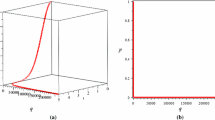Abstract
According to history texts, philosophers searched for a unifying natural law whereby natural phenomena and numbers are related. More than 2300 years ago, Aristotle postulated that nature requires minimum energy. More than 220 years ago, Euler applied the minimum energy postulate. More than 200 years ago, Lagrange provided a mathematical “proof” of the postulate for conservative systems. The resulting Principle of Least Action served only to derive the differential equations of motion of a conservative system. Then, 170 years ago, Hamilton presented what he claimed to be a “general method in dynamics.” Hamilton's resulting “Law of Varying Action” was supposed to apply to both conservative and non-conservative systems and was supposed to yield either the differential equations of motion or the integrals of those differential equations. However, no direct evaluation of the integrals of motion ever resulted from Hamilton's law of varying action. In 1975, a scant 29 years ago, following five years of controversy with engineer mechanicians, Dr. Wolfgang Yourgrau, Editor, Foundations of Physics, published my first paper based on Aristotle's postulate, without mathematical proof. That and subsequent papers present, through applications, a true “general method in dynamics.” In this essay, I present the mathematical proof that is missing from my 1975 and subsequent papers. Six fundamental integrals of analytical mechanics are derived from Aristotle's postulate. First, however, Hamilton must be revisited to show why his H function and his “force function” prevents the law of varying action from being the general method in dynamics that he claimed it to be. I have found that Hamilton’s Law of Varying Action (HLVA), as Hamilton presented it, cannot be applied to systems for which the force function is non-integrable. In 1972, Dr. B.E. Gatewood and Dr. D.P. Beres (then a graduate student) discovered that the end-point term associated with the principle of least action does not vanish. I named the new equation, “the general energy equation.” In 1973, because I was doing with it what Hamilton claimed could be done with HLVA, I simply assumed that this new equation was HLVA. I gave the new equation the misnomer HLVA. In 2001, I learned that I had made a grave mistake. I found that HLVA is at most a special case of the general energy equation. My interpretation of Aristotle's postulate permits one to by-pass the differential equations of motion completely for both conservative and non-conservative systems (no calculus of variations).
Similar content being viewed by others
REFERENCES
Grant, NASA NGR 36–008–197, Application of the General Energy Equation-A Unified Approach to Mechanics, NASA Scientific and Technical Information Center, College Park Maryland 20740 (April 1973).
W. R. Hamilton, Phil. Trans. Roy. Soc. Lond. 124, 247–308 (1834).
C. D. Bailey, Found. Phys. 5, 433 (1975).
C. D. Bailey, Found. Phys. 32, 159 (2002).
A. H. Flax, AIAA J. 12, 224 (1974).
W. R. Hamilton, Phil. Trans. Roy. Soc. Lond. 124, 95–144 (1835).
D. E. Cooley, M. S. Thesis, The Ohio State University (1972).
L. J. Huttsell, M. S. Thesis, The Ohio State University (1972).
D. P. Beres, M. S. Thesis, The Ohio State University (1973).
J. L. Haines, M. S. Thesis, The Ohio State University (1977).
R. D. Witchey, M. S. Thesis, The Ohio State University (1980).
R. C. Knarr, M. S. Thesis, The Ohio State University (1982).
J. K. Ramsey, M. S. Thesis, The Ohio State University (1985).
P. E. Zimpelmann, M. S. Thesis, The Ohio State University (1985).
C. D. Bailey, Historical Survey of the Development of Mechanics, The Ohio State University (1973).
C. T. Chase, The Evolution of Modern Physics, (van Nostrand, New York, 1947).
Lanczos, The Variational Principles of Mechanics (University of Toronto Press, 1949).
W. Yourgrau and S. Mandelstam, Variational Principles in Dynamics and Quantum Theory, 3rd edn. (Saunders, Philadelphia, 1968).
J. G. Papastavridis J. Sound Vibr. 118, 378 (1987).
C. D. Bailey, J. Sound Vibr. 131, 331 (1989).
C. V. Smith, J. Sound Vibr. 145, 159 (1991).
C. D. Bailey, AIAA J. 11, 14 (1973).
C. V. Smith, Jr., ASME J. Appl. Mech. 44, 796 (1977).
Author information
Authors and Affiliations
Rights and permissions
About this article
Cite this article
Bailey, C.D. Hamilton and the Law of Varying Action Revisited. Foundations of Physics 34, 1385–1406 (2004). https://doi.org/10.1023/B:FOOP.0000044097.65629.20
Issue Date:
DOI: https://doi.org/10.1023/B:FOOP.0000044097.65629.20




